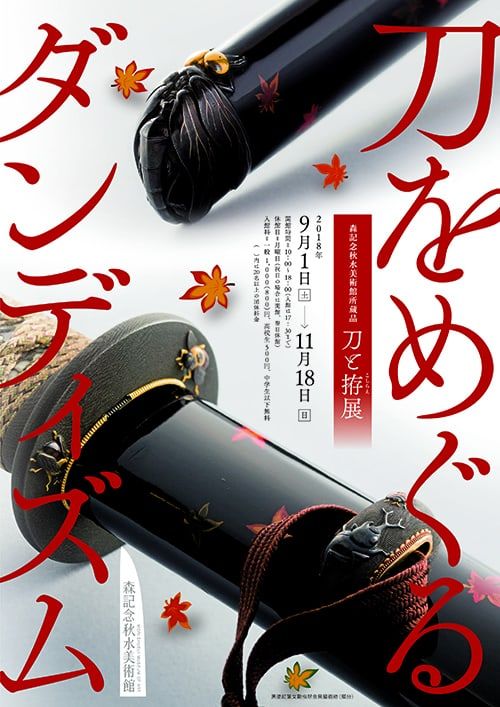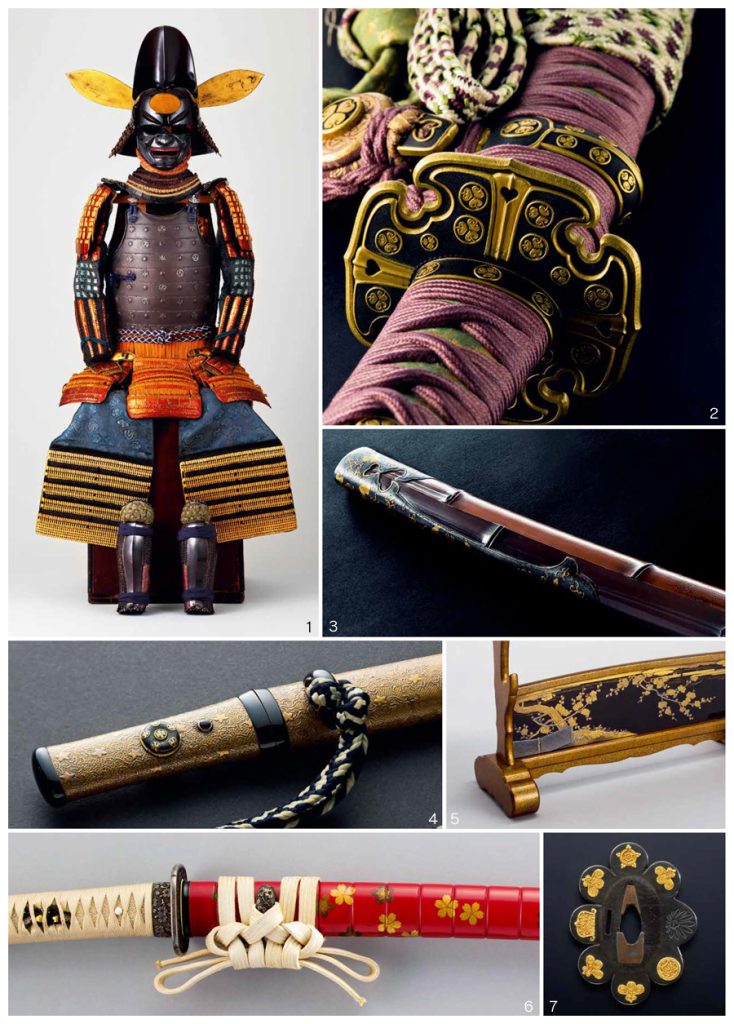We are pleased to present this Dandyism and the Sword exhibition, showing off sword blades, koshirae fittings, armor, and other items from the Japanese sword collection of the Mori Shusui Museum of Art, with a focus on items to which sword fittings would be attached.
Because Japanese swords were, at their core, ultimately weapons, user safety was a prerequisite, necessitating tsuka hilts, tsuba handguards, saya scabbards, and other fittings. Many decorated sword fittings have been found dating back to the Kofun period (ca. 3rd to 7th c.), suggesting that this tendency already existed even by that time. Decorated swords were a way for influential individuals to flaunt their power to those around them. Due to their association with authority figures, sword fittings developed over time into works of art carried primarily by nobles and the samurai, with designs changing to fit the tastes of each era.
On the whole, the Edo period (ca. 1600–1870) was an era of peace, spared from the bloody upheaval that defined the Warring States period before it. As a result, swords took on more of a symbolic meaning, and many ornately decorated items were produced during this time. There were also master artisans who specialized in sword fittings, and their work was as highly treasured as the swords’ blades themselves. However, the official decree banning the wearing of swords following the Meiji Restoration led to many swordmakers, metalworkers, and other sword-related artisans losing their jobs. These artisans had staked their livelihoods on works of art, created through their exceptional skill and technique; they paved the way for the uniquely Japanese art that would blossom through the country’s transition into the modern age and on to the present day.
For this exhibition, the 2F Exhibition Room features both sword blades and the fittings and mountings used with them, while the 3F Exhibition Room features armor, horse harnesses, and other related items. We invite visitors to explore the beautiful designs on these samurai swords, koshirae fittings, and armor, as well as the exquisite artisanry that went into their making.





 Back
Back